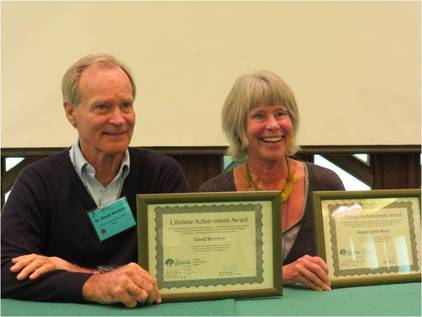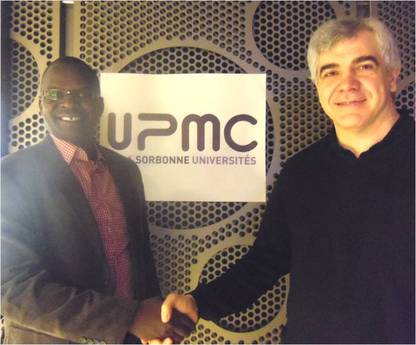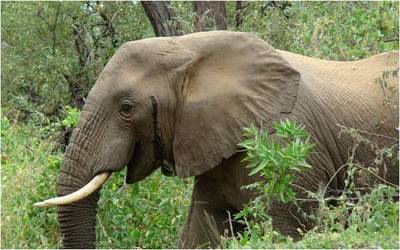 David Western and Megan Epler Wood at the international conference in Nairobi.
David Western and Megan Epler Wood at the international conference in Nairobi. At the Nairobi conference Western looked at the progress in ecotourism since 1997 when TIES, the Kenya Wildlife Service and Ecotourism Kenya jointly hosted an international workshop on Ecotourism at a Crossroad. He pointed out that Kenya at that time represented the worst and best of tourism. On one hand Kenya had become notorious for minibus tourism crowding lions and cheetahs in national parks, on the other as a pioneer in community-based ecotourism. That same year Kenya Wildlife Service launched its Parks Beyond Parks movement to spur community conservation efforts on the 50th anniversary of park. The first community conservancy in Kenya was launched in Kenya the same year. A decade and a half later, the movement has spawned over 150 conservancies covering more than 6 percent of the land area of Kenya and conserving more than all national parks and reserves combined. Dixon Kaiyelo of the Wildlife Conservancy Association of Kenya, John Kamanga, coordinator of the South Rift Association of Kenya, Daniel Letoiye of the Northern Rangelands Trust and Benson Laitayan of the AmboseliEcosystsem Trust reviewed the remarkable growth of the Parks Beyond Parks movement and the growth of ecotourism from a community perspective.
http://www.responsibletravel.org/resources/documents/reports/TPhil_Conference_Kenya.pdf


 RSS Feed
RSS Feed
